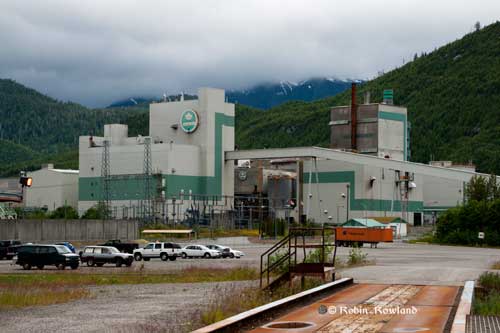Energy
The governor of Louisiana, Bobby Jindal today announced that the state could be the site of what he calls the “one of the first natural gas liquefaction
facilities in North America.”
The facility will be built by Cheniere Energy which already has a terminal at Sabine Pass in Cameron Parish in the state.
Cheniere says it will spend $6 billion to
expand its existing facility, which will be one of the largest capital
investments in Louisiana history.
That means the Louisiana terminal could rival Kitimat in size and potential. The projected timeline for both shows construction and operational startup would happen at the same time.
A news release from the governor’s office says
The new project will create 148 new jobs and retain 77 existing jobs,
with a total compensation and benefits package that will exceed an
average of $100,000 a year. The new jobs will support another 589
indirect jobs in the area and 3,000 construction jobs will be created by
the project at the peak of construction activity. Cheniere will build
its new facility near the Louisiana-Texas border in Cameron Parish to
handle the shipment of liquefied natural gas (LNG) from the company’s
international LNG terminal.
Gov. Jindal said, “Cheniere Energy’s
construction of one the country’s first liquefaction facilities at the
Sabine Pass terminal in Cameron Parish is a huge win for our state. This
multi-billion dollar investment will be one of the largest capital
investments in the history of Louisiana, and build on our incredible
record of job creation projects all across the state. Cheniere’s
facility will grow our economy, increase natural gas production and
become a major exchange in continuing to meet the demand for energy
around the world.”
“The construction of Cheniere’s Liquefaction
Project in Cameron Parish will provide key support to Louisiana’s
economy and natural gas industry, which has been transformed by the
development of the Haynesville Shale,” said Charif Souki, Chairman and
CEO of Cheniere. “In only two years, Louisiana’s natural gas production
has doubled as the Haynesville has grown into one of the most prolific
shale plays in the world. Our Liquefaction Project will provide
thousands of jobs in Southwest Louisiana while connecting the state’s
natural gas industry to global markets, making Louisiana the world’s
first dual importer and supplier of LNG. We greatly appreciate the
support that Cheniere has received from the State of Louisiana and the
people of Cameron Parish, who have demonstrated a strong commitment to
our Sabine Pass LNG terminal.”
Cheniere Energy anticipates beginning
construction of the facility in early 2012. Hiring of the new permanent
jobs will begin in 2014 and the facility will commence operations in
2015. The final phase of the project is expected by the end of
2018.Adding liquefaction capabilities will transform the Sabine Pass
terminal into a bi-directional facility capable of exporting LNG in
addition to receiving LNG for regasification.
The Louisiana facility would use gas from the Haynesville Shale which is a Jurassic formation on the Texas-Louisiana border. Shale gas that would come through Kitimat comes largely from northeast British Columbia, especially the Horn River Basin.
Both the Kitimat and Louisiana projects are scheduled to begin main construction in 2012 with operations starting in 2015.
The KM LNG facility would have an initial plant capacity of 5 million metric tons per annum (mmtpa) with potential to expand to 10 mmtpa or more. The Louisiana release does not give a figure for the capacity of the plant.
During the recent National Energy Board hearings on KM LNG’s application for an export licence, witnesses repeatedly stressed there could be potential rival export ports for northeast BC shale gas in the United States, mainly in Oregon or Washington states, if the licence was not approved or the conditions were too restrictive. The Louisiana terminal would not likely be a rival for Kitimat for northern shale gas, although as the witnesses at the NEB hearings always stressed there is no way of tracking the origin of the “molecules” in the integrated North American pipeline network.
Governor Bobby Jindal’s news release

 The closed Eurocan plant in Kitimat, the day it was sold, July 14, 2011. (Robin Rowland/Northwest Coast Energy News)
The closed Eurocan plant in Kitimat, the day it was sold, July 14, 2011. (Robin Rowland/Northwest Coast Energy News)